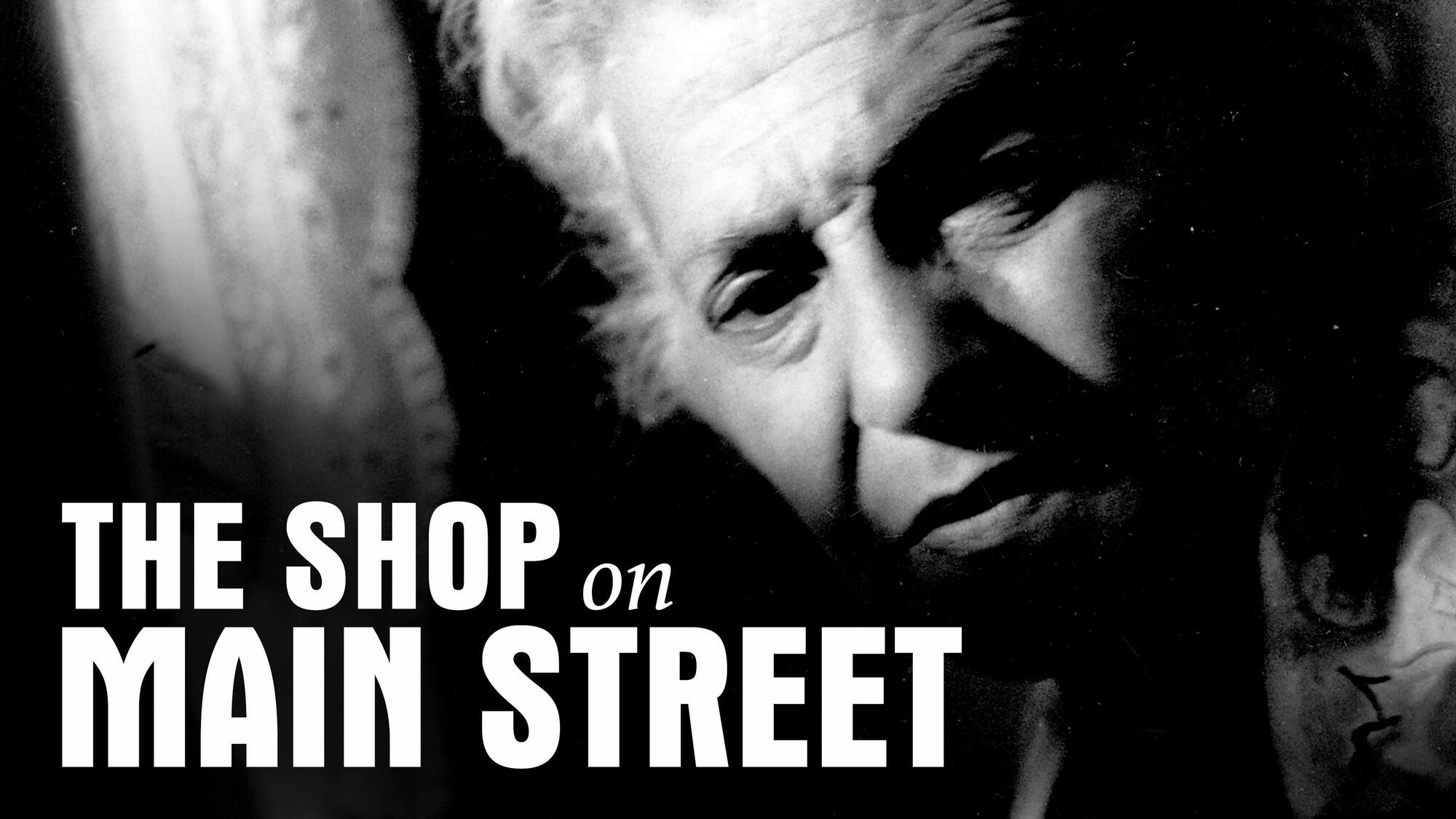
The Shop on Main Street is a critically acclaimed movie that captivated audiences around the world with its powerful storytelling and unforgettable characters. Directed by Ján Kadár and Elmar Klos, this Czechoslovak film was released in 1965 and quickly became a cinematic masterpiece. Set during the backdrop of World War II, the film tells the poignant story of an unlikely friendship between an innocent Slovak carpenter and an elderly Jewish widow. The Shop on Main Street delves into themes of morality, conscience, and the devastating consequences of prejudice and discrimination. With its powerful narrative and exceptional performances, this movie continues to resonate with viewers, leaving a lasting impact on their hearts and minds. In this article, we will explore 37 fascinating facts about The Shop on Main Street, shedding light on the making of this remarkable film and the influence it has had in the world of cinema.
Key Takeaways:
- “The Shop on Main Street” is a powerful Czechoslovak film set during World War II, exploring themes of guilt, responsibility, and the impact of war on individuals. It won an Academy Award and remains influential in European cinema.
- This critically acclaimed movie sheds light on the complexities of survival, sacrifice, and the choices made during wartime. It continues to resonate with audiences worldwide, making it a timeless piece of cinematic history.
The Shop on Main Street is a critically acclaimed Czechoslovak film released in 1965.
The movie, directed by Ján Kadár and Elmar Klos, won the Academy Award for Best Foreign Language Film in 1966.
It is set during the World War II era, specifically in a small Slovak town.
The story revolves around a carpenter named Tóno Brtko, who is unwittingly appointed as the “Aryan controller” of an elderly Jewish woman’s button shop.
The film explores themes of guilt, responsibility, and the effects of war on individuals.
It delves into the moral dilemmas faced by Tóno as he forms a bond with the Jewish shop owner and begins to question the actions of the Nazi regime.
“The Shop on Main Street” was based on a story by Ladislav Grosman.
Grosman himself co-wrote the screenplay, offering a unique perspective on the events of the film.
It is considered one of the most significant films in Czechoslovak cinema history.
The movie gained international recognition for its powerful storytelling and thought-provoking subject matter.
The film was shot in the picturesque town of Sabinov in eastern Slovakia.
Its authentic setting adds to the overall realism and immersion of the story.
“The Shop on Main Street” highlights the dangers and consequences of blind obedience to authority.
Through Tóno’s character, the audience is presented with the devastating effects of Nazi policies on innocent lives.
The movie’s original title in Slovak is “Obchod na korze.”
The English title was chosen to reflect the central location of the shop within the story.
The actors in the film were largely unknown at the time, lending a sense of authenticity to their performances.
Ignác Chrabák, who played Tóno, and Ida Kami?ska, who portrayed the Jewish shop owner, delivered powerful and memorable performances.
“The Shop on Main Street” was a critical and commercial success.
It received positive reviews from both Czechoslovak and international audiences, further solidifying its reputation.
The film was black and white, which added to the somber and melancholic tone of the story.
The lack of color emphasized the seriousness of the subject matter and the harsh realities of war.
“The Shop on Main Street” was banned in several countries during its initial release due to its portrayal of Nazi occupation.
However, it gained a cult following in underground and art-house circles.
The movie’s musical score, composed by Zden?k Liška, added depth and emotional resonance to the narrative.
The haunting melodies heightened the tension and impact of pivotal scenes throughout the film.
“The Shop on Main Street” was praised for its nuanced depiction of the complex relationship between Tóno and the Jewish shop owner, Mrs. Lautmannová.
Their evolving connection showcases the power of compassion and empathy in the face of adversity.
The film has been analyzed and studied extensively by film scholars and historians for its thematic depth and artistic merits.
It is often cited as a prime example of Czechoslovak New Wave cinema.
“The Shop on Main Street” confronts the audience with difficult ethical questions and challenges societal norms.
It explores the responsibility of individuals during times of great upheaval and the consequences of inaction.
The movie’s success inspired a stage adaptation, which premiered in Prague in 1969.
This adaptation further popularized the story and expanded its reach.
Ján Kadár and Elmar Klos, the directors of the film, were recognized as pioneers of Czechoslovak cinema.
Their collaboration on “The Shop on Main Street” secured their place in film history.
The Shop on Main Street remains influential in European cinema, particularly in its exploration of wartime experiences and their long-lasting effects.
It continues to be celebrated as a powerful and resonant work of art.
The film showcases the strength and resilience of ordinary individuals in extraordinary circumstances.
It reminds us of the importance of standing up against injustice and remaining true to our principles.
“The Shop on Main Street” sheds light on the often overlooked stories of Jewish individuals during World War II.
It serves as a poignant reminder of the atrocities committed and the lasting impact on affected communities.
The movie’s cinematography, helmed by Vladimír Novotný, expertly captures the atmosphere and emotions of the story.
The use of lighting and camera angles enhances the intensity of each scene.
“The Shop on Main Street” provides a glimpse into the struggles faced by everyday people during wartime.
It explores the complexities of survival, sacrifice, and the choices we make when faced with impossible situations.
The critical success of the film paved the way for increased recognition of Czechoslovak cinema on the international stage.
It opened doors for other filmmakers and put the spotlight on the country’s unique storytelling traditions.
“The Shop on Main Street” received numerous accolades from film festivals around the world.
Its impact resonated with audiences and industry professionals alike.
The film’s narrative unfolds gradually, allowing the audience to connect deeply with the characters and their struggles.
It is a poignant exploration of humanity’s capacity for both good and evil.
“The Shop on Main Street” remains a relevant and thought-provoking film, with themes that resonate in today’s world.
Its examination of systemic oppression and the importance of empathy serves as a reminder of the ongoing fight for justice and equality.
The movie’s script was written by Ladislav Grosman, Ján Kadár, and Elmar Klos.
The collaborative effort resulted in a rich and captivating story that continues to captivate audiences to this day.
“The Shop on Main Street” showcases the power of cinema to educate, inspire, and shed light on important historical events.
It is a testament to the enduring impact of storytelling through film.
The film’s release in 1965 was met with critical acclaim and solidified Czechoslovak cinema as a force to be reckoned with.
It marked a turning point in the country’s film history.
“The Shop on Main Street” is an example of the power of international cooperation in filmmaking.
The collaboration between Czech and Slovak filmmakers resulted in a masterpiece that transcends geographical boundaries.
The movie’s success led to increased recognition and funding for the Czechoslovak film industry.
It paved the way for the production of other groundbreaking films.
“The Shop on Main Street” showcases the talent and artistry of Czechoslovak actors and filmmakers.
It remains a testament to their ability to create meaningful and impactful cinema.
The film’s themes and messages continue to resonate with audiences worldwide, making it a timeless piece of cinematic history.
Its exploration of guilt, responsibility, and the human spirit strikes a universal chord.
“The Shop on Main Street” is a must-watch for cinephiles and those interested in exploring complex narratives with historical significance.
It is an immersive experience that will leave a lasting impression.
The Shop on Main Street’s enduring legacy is a testament to the power of storytelling and the impact that cinema can have on society.
It serves as a reminder of the importance of preserving and appreciating cinematic masterpieces.
The movie continues to be studied and discussed in film schools and academic circles, solidifying its position as one of the greatest films ever made.
Its profound impact on audiences and the film industry cannot be understated.
Conclusion
In conclusion, The Shop on Main Street is a classic movie that offers a captivating and poignant story set against the backdrop of World War II. It showcases the themes of friendship, morality, and the complexities of human nature. The performances of the cast, particularly Jozef Kroner and Ida Kaminska, are outstanding and bring depth and authenticity to the characters. The film’s beautiful cinematography and thought-provoking screenplay make it a must-watch for lovers of cinema. Whether you are a fan of historical dramas or simply appreciate compelling storytelling, The Shop on Main Street is a movie that will leave a lasting impression.
FAQs
1. Is The Shop on Main Street based on a true story?
Yes, The Shop on Main Street is loosely based on historical events and was inspired by true stories of Jewish persecution during World War II.
2. When was The Shop on Main Street released?
The movie was released in 1965.
3. Who directed The Shop on Main Street?
The Shop on Main Street was directed by Ján Kadár and Elmar Klos, who received an Academy Award for Best Foreign Language Film for their work.
4. Where does the movie take place?
The film is set in a small town in Slovakia during the Nazi occupation.
5. Can I watch The Shop on Main Street with English subtitles?
Yes, the movie has been translated into various languages, including English, so you can enjoy it with subtitles.
6. How long is the movie?
The Shop on Main Street has a runtime of approximately 125 minutes.
7. Are there any other notable films by Ján Kadár and Elmar Klos?
Yes, Ján Kadár and Elmar Klos collaborated on several other films, including The Death of Mr. Baltazar, The Devil’s Trap, and Adrift.
Was this page helpful?
Our commitment to delivering trustworthy and engaging content is at the heart of what we do. Each fact on our site is contributed by real users like you, bringing a wealth of diverse insights and information. To ensure the highest standards of accuracy and reliability, our dedicated editors meticulously review each submission. This process guarantees that the facts we share are not only fascinating but also credible. Trust in our commitment to quality and authenticity as you explore and learn with us.


